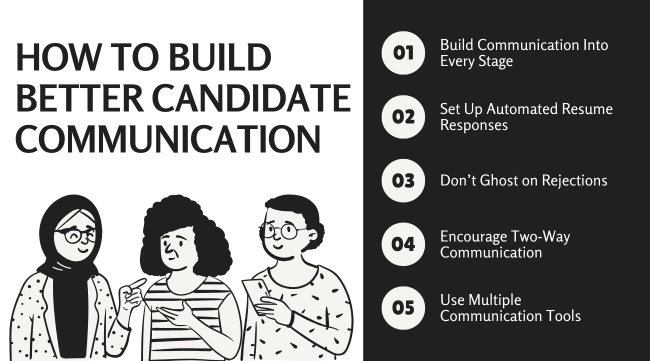
“Ghosting” has become a buzzword in the modern recruitment landscape, and honestly, both job seekers and employers are guilty of it. For this blog, we’re focusing on the latter: how employers can prevent ghosting and build a stronger, more transparent candidate experience. Let’s get into it!
What is Ghosting in Recruitment?
Ghosting occurs when communication abruptly stops without warning or explanation. In recruitment, this can happen when an employer disappears mid-process, leaving a candidate in the dark.
While it’s not always malicious or even intentional, ghosting has become more common due to the ever-changing, high-demand hiring cycles, digital communication tools, and discomfort around delivering unfavorable news. Recruiters and hiring managers are under immense pressure, but that doesn’t make ghosting acceptable. Here are common ways employers ghost candidates:
- No response or confirmation after application submission
- Requesting more information, then vanishing
- Failing to provide feedback after interviews
- Not informing candidates of their status or next steps
Why Ghosting Hurts More Than You Think
Damages Employer Brand
A poor experience can extend far beyond one candidate. Negative reviews on job boards and word-of-mouth complaints can dissuade candidates from applying to your organization in the future. Your reputation as an employer is a key part of your brand, and ghosting puts it at risk.
Unfair to Candidates
Searching for a job is already stressful. Candidates may be delaying other opportunities, making financial decisions, or emotionally invested in your company. Lack of closure can cause unnecessary anxiety, frustration, and missed opportunities.
How to Stop Ghosting and Start Communicating
If you want to improve your hiring outcomes and candidate relationships, here are practical ways to enhance your communication strategy:
- Build Communication Into Every Stage: From the moment someone applies, ensure communication points are built into your process. Let candidates know what to expect, when to expect it, and how they can reach you. If the hiring process is lengthy or involves multiple steps, say so upfront. Transparency helps manage expectations and builds trust.
- Set Up Automated Responses: A simple “Thanks for applying!” email can go a long way. Automation helps acknowledge every applicant, even if they aren’t selected to move forward.
- Don’t Ghost on Rejections: If a candidate isn’t a fit, tell them. Whether they’ve just submitted a resume or completed multiple interviews, always close the loop.
- Encourage Two-Way Communication: Let candidates know it’s okay for them to follow up, and respond when they do. A message like, “If you haven’t heard from us in two weeks, feel free to check in,” empowers candidates to take initiative without putting all the pressure on your hiring team.
- Use Multiple Communication Tools: We’re fortunate to live in a tech-forward world. Phone, email, text, or LinkedIn, use the tools that make sense for the role, the candidate, and yourself. Tech should enable more connection, not less.

Ghosting isn’t just a bad habit; it’s a liability. How you treat candidates matters more than ever. By improving communication, being transparent, and respecting every applicant’s time, you’ll create a more human hiring experience, strengthening your reputation and attracting top talent.
